Rome’s ethnic restaurants: As Italians travel more, they are growing in popularity and here are my seven favorites
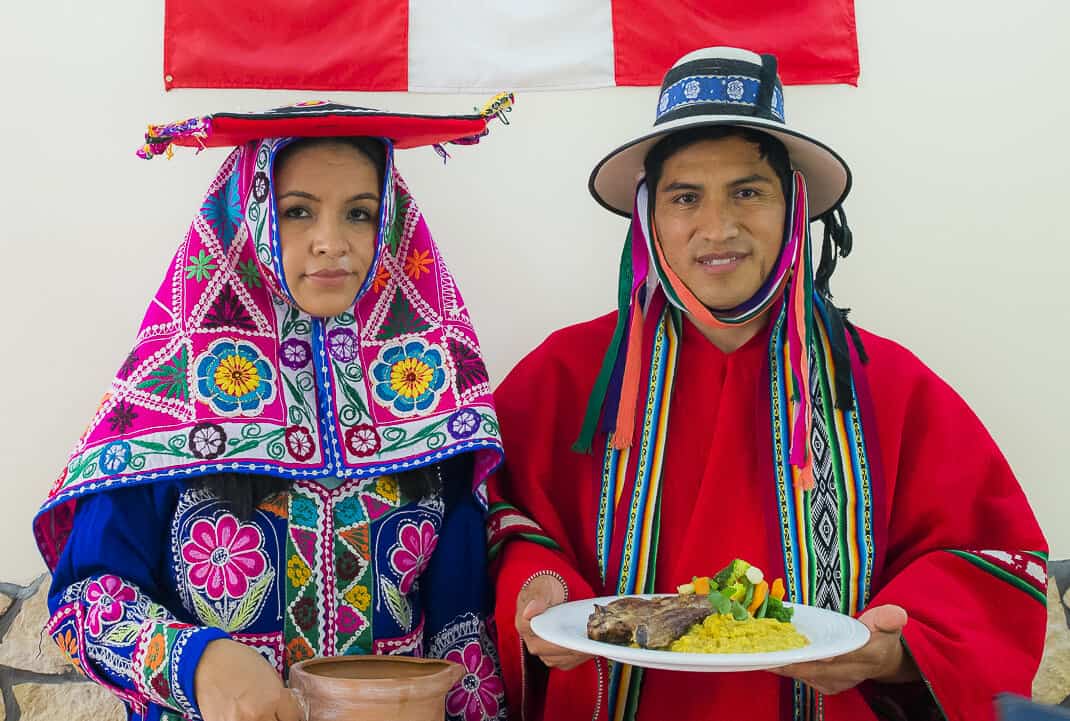
The only complaint I hear about restaurants in Rome is all the menus are the same. Just like all roads lead to Rome and Nero burned down the city, this is a blatant lie. Yes, you’ll see bucatini amatriciana, cacio e pepe and pasta carbonara on most but every trattoria will have its own specialties.
All 20 Italian regions have their own cuisines. In Rome, you can find restaurants from Sicily, Sardinia, Tuscany, Molise, Abruzzo and many others. You don’t need to go to Naples for a Neapolitan pizza.
But the biggest difference in the restaurant scene has been the rise of Rome’s ethnic restaurants. It’s a reflection of the country as a whole. From 2007-2020, ethnic food sales in Italy jumped 93 percent, according to the National Library of Medicine. The number of foreign entrepreneurs in the catering sector from 2010-2014 increased 43 percent. There’s an estimated 50,000 ethnic restaurants in Italy, according to the Leone Moressa Foundation.
Keep in mind this is a country that didn’t have a McDonald’s until 1986. When the first arrived in Rome, protestors gathered outside its doors in Piazza Spagna and chanted, “SAVE ROME FROM AMERICANIZATION!”

I’ve noticed the change in Italians’ tastes, too. I remember in 2013 when I visited Isla Holbox, an idyllic, laid-back island off the coast of Mexico’s Yucatan Peninsula. Two Italian couples were in the hut next to mine.
They ate at the local pizzeria every night.
The change is largely due to the change in Italy’s demographics. Italians complain about immigration – and the new government is set on practically closing its borders – but immigrants have added more flavor to Italy, in more ways than one.
In 2021 there were 5 million non-Italian residents. In 1981 there were 200,000. In 2000 there were 1 million. What are they all doing in Italy?
Many of them opened restaurants.
It takes courage to open an ethnic restaurant in Rome. Many older Romans believe that ethnic food means pineapple on a pizza. But the younger Romans are traveling more than ever. In 2019, Italians made 66.7 million trips abroad.
It’s no coincidence that the increase in travel combined with increased immigration has resulted in a growth of ethnic food.
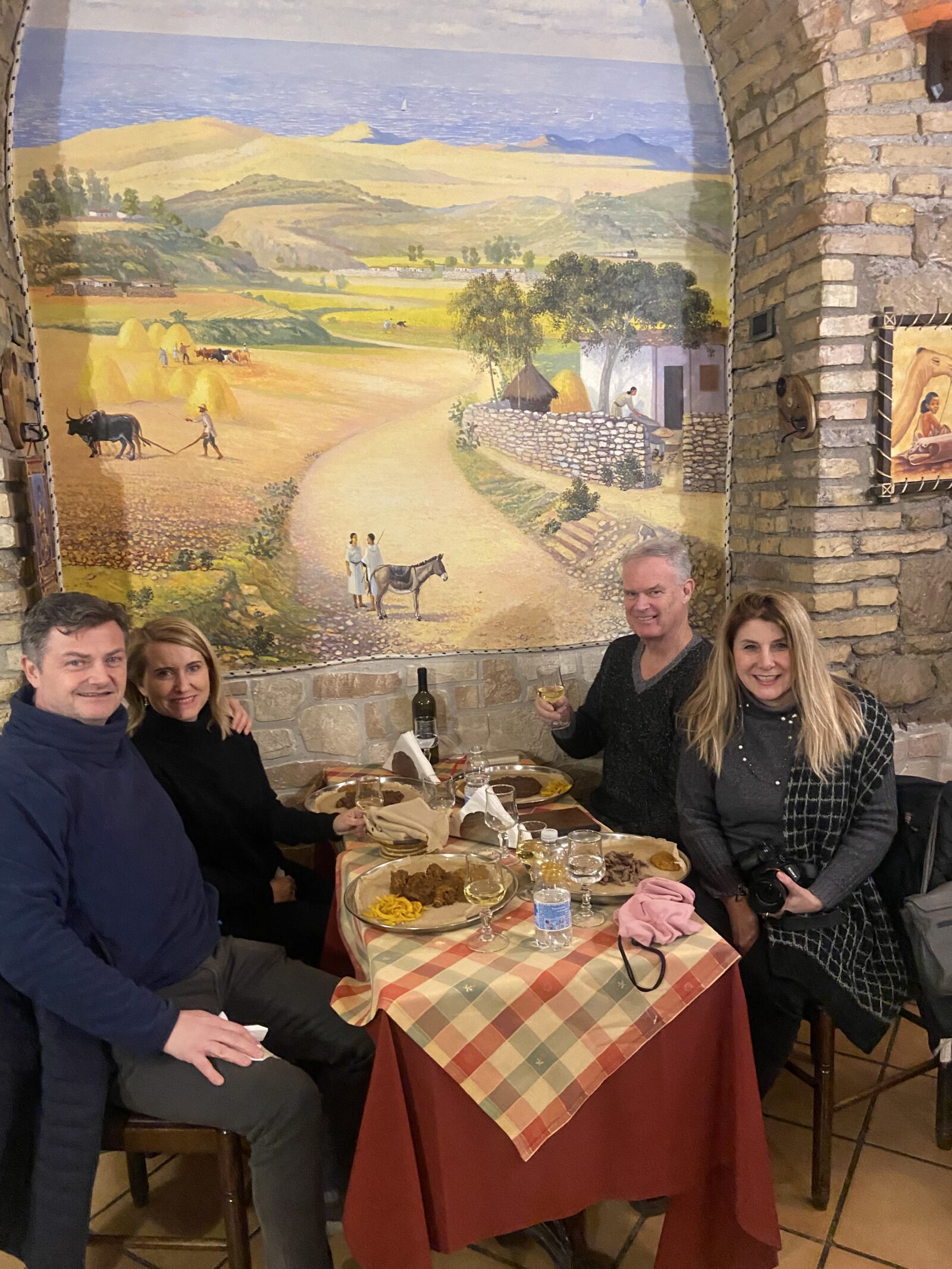
Ethnic restaurants here are also getting a slice of the tourist dollar. Why would a tourist come to Italy and eat ethnic food? As Barakat Barakat, owner of the Lebanese restaurant Mandaloun, told me, “One tourist if he stays in Rome more than three days, he can be my client. First day he tries pasta. The second day he tries pizza. The third day he finds nothing appealing. The fourth day he is mine.”
If you’re planning a trip to Rome and expecting a pasta overdose or if you’re an expat in Rome and wondering about the underrated ethnic food scene, here are seven of my favorite ethnic restaurants in the city. (In alphabetical order by ethnicity. Neighborhood in parentheses. Phone numbers don’t include 39 country code.):
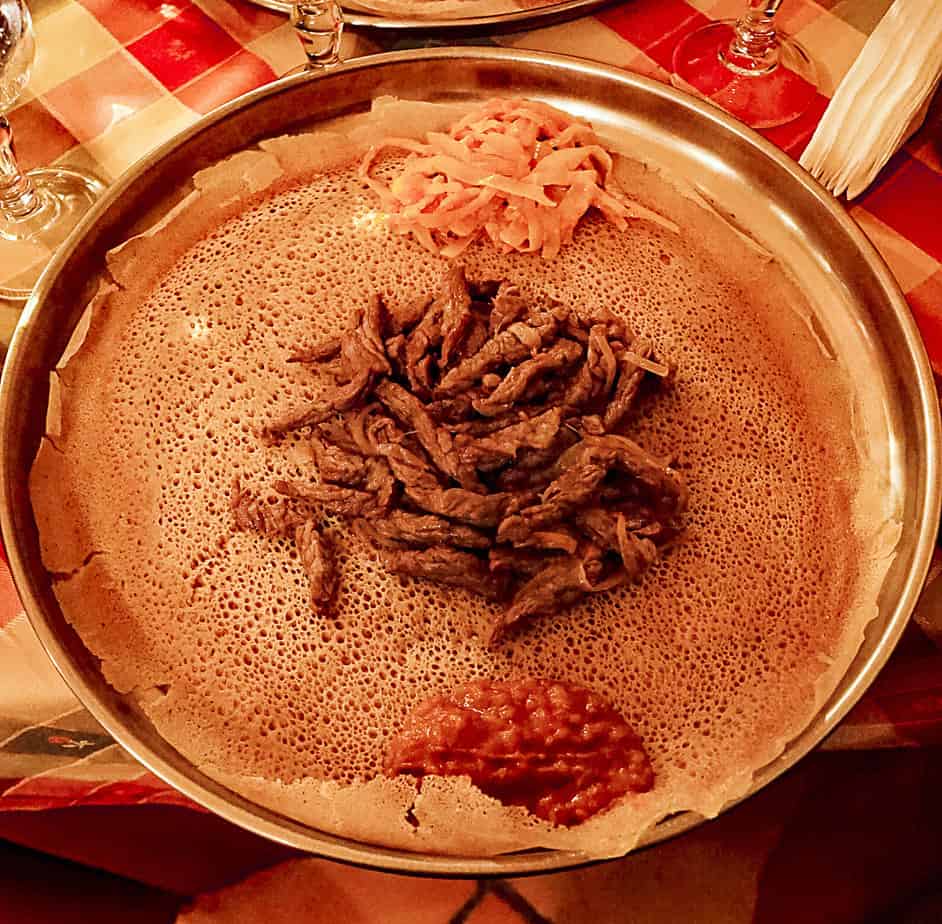
Eritrean: Asmara (Termini)
When I lived in Rome the first time from 2001-03, Ethiopian was one of the few ethnic restaurants I could find. It’s a unique dining experience. Dishes come out on big plates of injera, a south, spongy flatbread where different ingredients are spread out on top. You grab the injera with your hand, pick up some meat or fish or vegetables and eat it like an hors d’oeuvres.
In a little restaurant just six blocks from Termini Station, I learned Ethiopia and Eritrea have the same cuisine. They share the same alphabet, culture and religion. They also share a 600-mile (1,000-kilometer) border which was the source of a border conflict that pushed a 20-year-old Eritrean social science student named Yosief Andemariam to move to Rome in 1991.
He worked cleaning mirrors of cars at stop lights during the day and at a gas station at night. When he started washing dishes in an Ethiopian restaurant, it began a slow climb resulting in opening Asmara in 2002.
I’ve never been to Eritrea or Ethiopia but I got a feel for it just sitting down in Asmara, named for the Eritrean capital. The entire restaurant is covered in Eritrean art. A giant mural of zebras and elephants around a watering hole adorns one wall. Another shows a country road winding through farmland. Spears and shields are everywhere.

I had the classic Eritrean dish: zighini, beef stew in hot sauce. Very tender meat and the hot sauce wasn’t overpowering, a perfect combination.
I asked Andemariam how hard it was to start an Eritrean restaurant in Rome.
“It was very difficult,” he said. “Italians, they have their own food. I did many advertising.”
He said it took about a year before the restaurant made a profit and now about 80 percent of his clientele is Italian. It makes sense. Ethiopia was an Italian colony from 1890-1940.
Also, Rome has 6,000 Eritreans and 5,000 Ethiopians.
Info: Via Cernaia 36, 06-481-4409, 11 a.m.-midnight, https://asmara-eritreanrestaurant.business.site/, mains from €11-14.

Indian: Gandhi (Ostiense)
Before Covid, every year this restaurant on Rome’s south side averaged 25,000-30,000 Indian customers from around the world. That doesn’t say as much about Indians’ lack of adventurism as it does Gandhi’s authenticity.
This is Indian food with class. Dark wood paneling covers the walls along with colorful paintings of women in native dress, holy men and the Indian countryside. Stylish table settings give it an air of high-end dining but the prices don’t reflect it.
I usually order Murg Peshawari, a saucy chicken dish from Kashmir made with capsicum, onion and tomatoes. The long list of tandoori dishes (baked in a clay oven) are terrific and so is the cheese naan, India’s trademark flatbread.
Mohsin Rehman started Gandhi with his uncle in 2015. They are Pakistanis but the differences between Pakistani and Indian cuisine are irrelevant to those who come here.
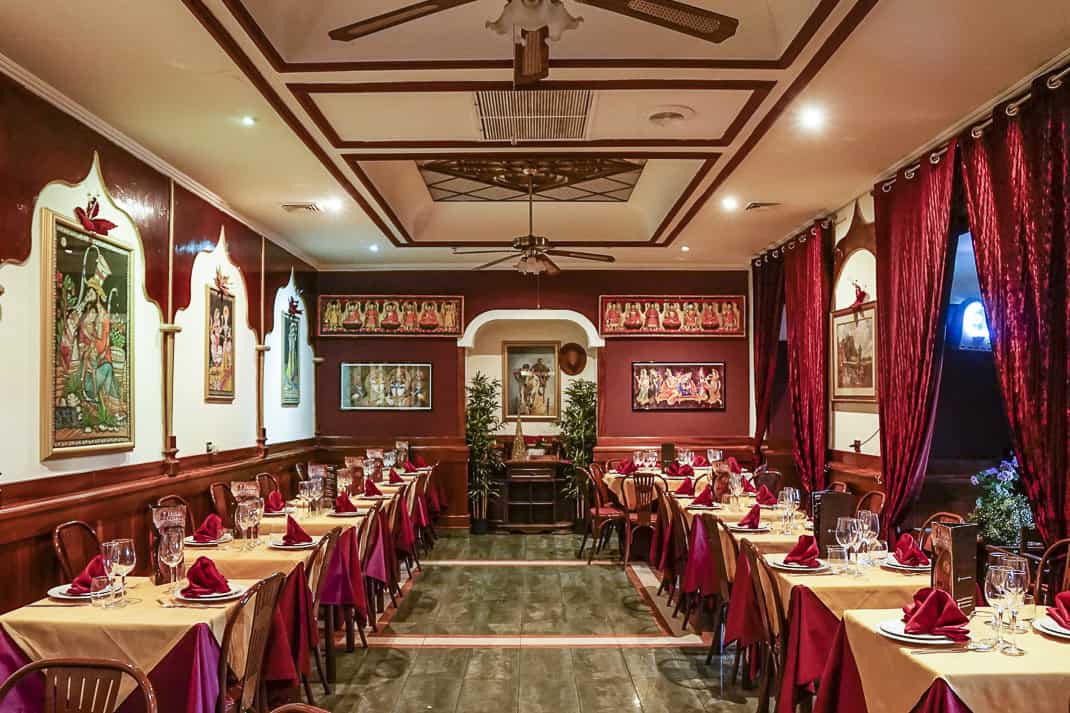
“You know the difference but Italians?” he told me. “They don’t know the difference of India and Pakistan. They all know Indians, Pakistanis, Bangladeshis, Sri Lankans. They are all Indians to them.”
Italians have joined the world in discovering India’s charm, from the colors to the cuisine, at such low prices. Nearly 127,000 Italians visited India in 2018 and many want to eat it again back home.
“But you have to be careful with the Italians for the food and the service,” said Rehman who followed his cousin here in 1996 when he was 20. “Otherwise they don’t come again.”
Also, Italians generally don’t like spicy food and some Indian dishes can burn the hair off your hand. Gandhi, however, does mild food and the ingredients come straight from Indian Trading SL in Milan. Gandhi has become a huge hit.
“Every Friday and Saturday, if you don’t have a reservation, you can’t find it easy to get a place here,” Rehman said.
Info: Via Pellegrino Matteucci 124, 06-6442-0047, https://www.gandhiroma.it/, 12:30-3 p.m., 7-11:30 p.m. Mains from €10-15.

Lebanese: Mandaloun (Villa Borghese)
It’s easier to sell ethnic food where Mandaloun has stood tall since 2012. It is just off hoity-toity Via Veneto, famous for paparazzi warring with stars who hung out there, and Villa Borghese, the prettiest park in Rome. It’s also in the middle of embassies and five-star hotels. It’s people who travel. It’s people with money.
“They know about Lebanese food,” said Barakat, the owner.
Yes, he has the same first and last name. He is a Maronite, an Eastern Catholic religion, from Ain Ebel, a southern Lebanese town surrounded by Muslim villages. He first came to Rome in the early 1980s to study engineering at Rome Sapienza University.
He had an electrical appliance shop and when the growing number of malls in Rome started taking his business, he moved to London where his brother lived. They opened four restaurants named Mandaloun (it’s an old Ottoman word for a traditional arched window in Lebanon) from 2001-2010. They still own three of them.
But Rome kept calling Barakat. He had family here. He took a chance and opened this one in 2012.
“It was very, very, very hard,” he said. “But I decided to come to have a battle with Italian people. Because the Italians, they aren’t used to having ethnic food. I decided come here and prove to them that ethnic food is good.”

He networked a lot with the Arab community in Rome and Italians who have worked in the Middle East. About 30 percent of his clientele are Arabs, 30 percent Italians and 30 percent tourists. It helps that 2,000 Italians work with the United Nations in Lebanon.
“They like to tell their families or relatives about Lebanon and Lebanese food,” he said.
On a quiet side street down the hill from Via Veneto, Mandaloun is a beautiful restaurant. Lithographs of Lebanon adorn the wall. Hookahs, the long-necked pipes popular in the Middle East, rest on tables. Soft Lebanese music fills the air.
I like the mixed grill, a selection of slow-grilled meats so tender you don’t need a knife. Also a must is the tabbouleh, Lebanese salad with tiny bits of greens, tomatoes and onion. So is the falafel, fried ground chickpea balls with an excellent sauce.
“The ingredients are similar to the Italian,” Barakat said. “We use a lot of tomato, cucumber, parsley, lettuce, onion and a little bit of garlic. That’s what Italians deal with every day.”
Info: Via di Porta Pinciana 16/B, 06-6482-4507, https://www.mandaloun-italy.com/, info@mandaloun.it, noon-1 a.m., mains from €16-21.

Peruvian: Sabor Andino (Aurelia)
If you haven’t tried authentic ceviche, you may not know that Peruvian food has been one of the trendiest cuisines in the world. In 2011, Ferran Andria, a 3-Michelin Star chef from Spain, said Peru held the key “to the future of gastronomia.” In 2013, superstar French chef Alain Ducasse said, “Peru will become one of the leading actors on the global culinary scene.”
The Culinary Institute of America named 2014 “The Year of the Peruvian Cuisine.” Just last year, Flagstaff magazine wrote a story headlined, “Peruvian on a Plate: Why Peruvian Cuisine is Hot Right Now.”
Bringing that trend to Rome from the mountains near Cusco, Peru, is Esteban Guillen Peralta. Inspired by his sister’s restaurant in their hometown of Apurimac, Peru, and his new wife who’d been cutting hair in Rome for years, Esteban and Ayde Soto Aymara moved to Rome together in 2013. They opened Sabor Andino in 2018.
It occupies a small building on a side street off Via Aurelia, a main artery that stretches across much of western Rome. Sabor Andino has an extensive menu, packed with all the big-flavor ingredients that make Peruvian cuisine special: chilies, corn, sweet potatoes, coriander, citrus, onion.
The key to Peruvian cuisine is its diversity. It takes ingredients from the Pacific Ocean, Andes Mountains and Amazon Jungle. What you get is South American fusion like one of my favorite dishes, Langostinos Andinos, shrimp breaded in quinoa and fruit with valerian and orange. Or Saltado de Pollo, stir-fried chicken with onion, tomato, soy sauce, French fries and white rice.
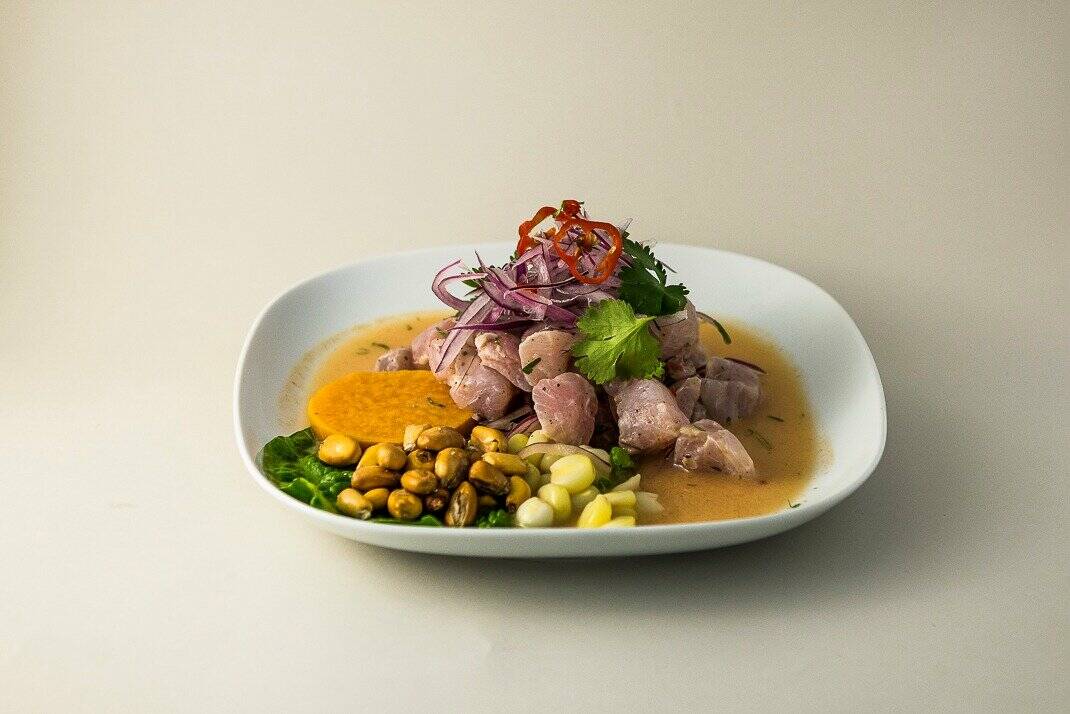
“At first my main goal was to get Latinos, then Italian people,” Peralta said in Spanish through a translator. “Now I get a lot of Italians, and tourists are coming.”
A big reason for Peruvian cuisine’s popularity is Peru’s economy improved after the resignation of dictator Alberto Fujimori in 2000. When any nation’s economy improves, so does the cuisine. (See: China.)
We had a big Peruvian restaurant in Denver where I lived before moving to Rome. The night I realized my dream to retire to Rome, I went to Taita Peruvian to celebrate with a Pisco Sour, Peru’s trademark cocktail made from the yellowish liquor pisco, and ceviche, Peru’s famous citrusy raw fish dish.
I have that now at Sabor Andino where Peralta ships all his important ingredients from Peru.
“It’s really good, really digestible and really healthy,” Peralta said.
Info: Via Gregorio XIII 12, 06-6450-2486, https://www.saborandino.it/, noon-3:30 p.m., 7-11 p.m. Tuesday-Saturday, noon-10 p.m. Sunday, main dishes €7-20.

Russian: Caucaso (San Paolo)
Calling it Russian is a misnomer and I apologize to owner Gagik Avetisjan. But it’s hard to slap one ethnicity on a restaurant with dishes from Russia, Ukraine, Moldova, Georgia, Armenia and Uzbekistan.
Modern USSR perhaps?
No. Nothing at Caucaso resembles the old, bland Soviet Union cuisine. When the USSR crumbled in 1991, the lights went on in the kitchens of all its republics. When I went to Russia the first time in 2005, Moscow was the fastest-growing restaurant city in the world. Georgia, with its great wine, was considered the Tuscany of the Soviet Union. I visited Uzbekistan in 2019 and Uzbek plov is one of the best rice pilafs I’ve ever had.
USSR also has a bad connotation for Gagik. When Russia invaded Ukraine last year, his restaurant was named Metrioska, opened in 2009 and named for the Russian wooden dolls of decreasing size that all fit inside one. Journalists poured down the narrow alley leading to his restaurant behind giant San Paolo church to get his take. Only one problem.
He’s Armenian. He didn’t have a Russian menu.

“I explained that this was not a Russian restaurant,” he said. “But there were some journalists from television who interpreted that I was Russian and the restaurant was Russian. You know propaganda.”
Caucaso is one place where Russians and Ukraines can party together. And Caucaso is as much a club as it is a restaurant. We dined there the night before New Year’s Eve and one room was filled with well-dressed men and women dancing to Russian music, celebrating someone’s birthday.
Another night it will be Ukrainians. Another Armenians.
“As I was a foreigner, I needed a corner for me,” said Gagik who moved to Rome in 1999. “A lot of foreigners here miss a corner for them to feel like home. After 75 years of communism – good or not – our culture is influenced by Russian culture. We all have the same culture. So when I opened this restaurant, I opened a corner for everyone, not for a single nationality but for an entire culture.”
It’s even a great corner for American expats like me who has been to most of these places. Let’s see, at Caucaso I started with a shot of Beluga from Russia, the smoothest, best vodka in the world. Then I had khachapuri, the traditional cheese pie from Georgia and vareniki, meat-stuffed dumplings, from Ukraine. I washed it all down with a bottle of Kindzmarauli, a famous sweet wine from Georgia.
I could’ve also had dolma, stuffed grape leaves, from Armenia, borscht from Russia or said Uzbek plov from Uzbekistan. When he first opened, the restaurant’s clients were all immigrants. Through word on the grapevine, more than 50 percent are now Italians.
“At the time there wasn’t geopolitical problems among these nationalities,” he said. “We stayed together in this peace corner. There is no geopolitics here. Then the geopolitics ruined everything. I hope normality and peace will come again.”
Info: Via Della Collina Volpi 6, 06-5964-8341, 1 p.m-midnight Thursday-Sunday, 7 p.m.-midnight Monday, Wednesday, mains start at €6.

Thai: Sukhothai (Monteverde)
Ever since moving to Rome in 2014 I’ve missed Thai food. We had fabulous Thai restaurants in Denver. Most cities around the world do. Who knew I had one stumbling distance from my front door in Rome?
Sukhothai is a small, unassuming restaurant set back from the main street in Monteverde, my non-touristy neighborhood up the hill from buzzing Trastevere. It’s small and tastefully decorated with wood carvings on the wall.
I didn’t even have to look at the menu to order. I was dying for the Thai staple, Pad Thai, stir fried rice noodles with shrimp, peanuts and vegetables. It was as good as I remembered it in Denver. It was even as good as I remembered in Thailand which I’ve visited many times.
It should. They get all the important ingredients such as lemongrass, kafir, ginger root and curry imported from Thailand.
“When people eat Thai food here, they dream of going to Thailand,” said owner Roberto Arcipreti.
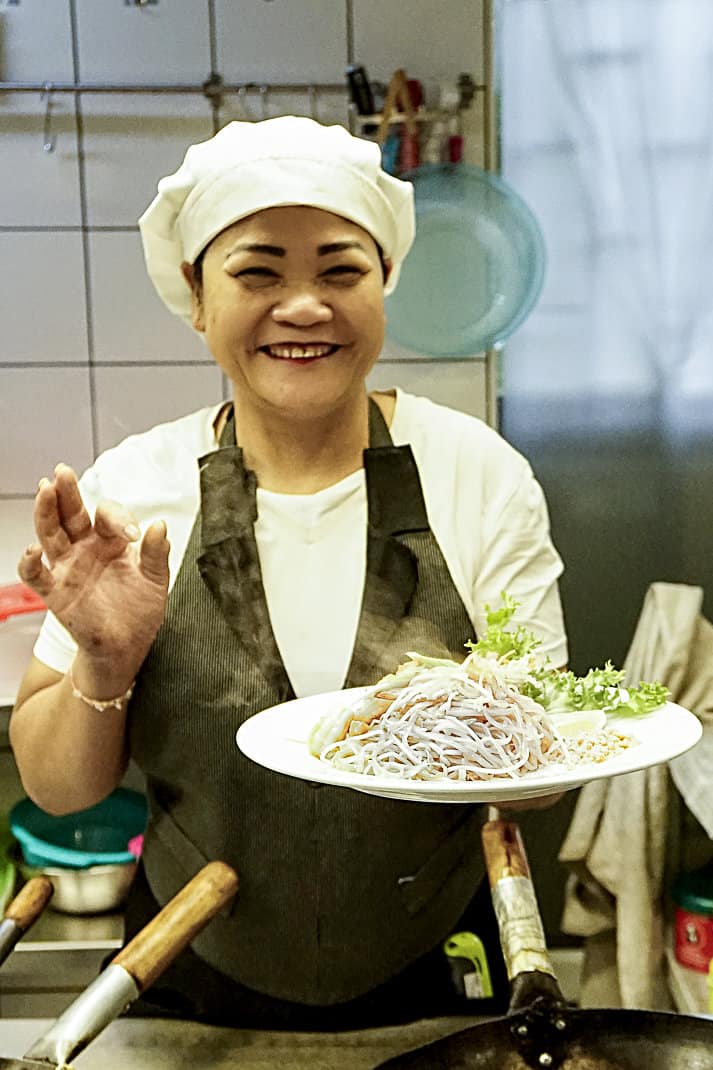
Arcipreti, 63, was born in Australia but moved to Rome when he was 3. In 2004 he went on vacation to Phuket, the popular city in Northern Thailand. His bungalow was near a restaurant. The first time he ate was at 6 in the morning.
He met a young woman working there.
“On my second day in Phuket,” he said, “I fell in love with her.”
Atiphorn Deenan’s dream was to be a chef and he took her back to Rome where they opened a Thai restaurant called Siam Pusin in 2008. He opened Sukhothai in 2016.
He advertised a lot in gymnasiums catering to Thai boxing and Thai massage centers. Rome’s Thai community also has a picnic the first week of every month in l’EUR, the modern, upscale neighborhood in southern Rome.
But much of his clientele comes from the changing mindset among Italians.
“Young Romans like to travel outside,” he said. “They come back to Rome and try to find what they tried in Thailand.”
In a mixed-culture relationship myself, I asked him how his was going.
“Love and food don’t have a border,” he said with a smile.
Info: Via Quirino Majorana 199, 06-5526-3993, http://www.sukhothai.it/, sukhothairoma@hotmail.it, 12:30-3 p.m., 7:30-11 p.m. Tuesday-Sunday, mains from €10-16.

Vietnamese: Nunu (Termini)
Gritty Termini isn’t known as a great restaurant neighborhood but it scores points in the ethnic department. Just three blocks from Asmara and two blocks from the station, Nunu received many thumbs up from fellow expats on our Expats Living in Rome website.
Nunu is a story of survival, both economical and personal. Nguyet Nguyen opened in July 2020, at the start of the Covid epidemic. Italy hit hard on the lockdowns but they survived with takeaway during lunch.
“Opening in Covid was bad and positive at the same time,” Nguyen said. “People were not able to travel to do a lot of stuff. They could enjoy something different because they couldn’t move.”
The setup is ingenious. Bamboo lanterns hang from the ceiling and silkscreen artwork of plants and birds adorn the walls. Every table has a pillow.
The restaurant is separated into three rooms representing three different regional cuisines: Hanoi from the north, Hui from the central and Ho Chi Minh City from the south. In the Hanoi room I had something called Ban Cho Gio Thit Nuong, vermicelli noodles topped with fried spring rolls and grilled chicken with herbs, lettuce and roasted peanuts. It was delicious, fresh, juicy and tender.
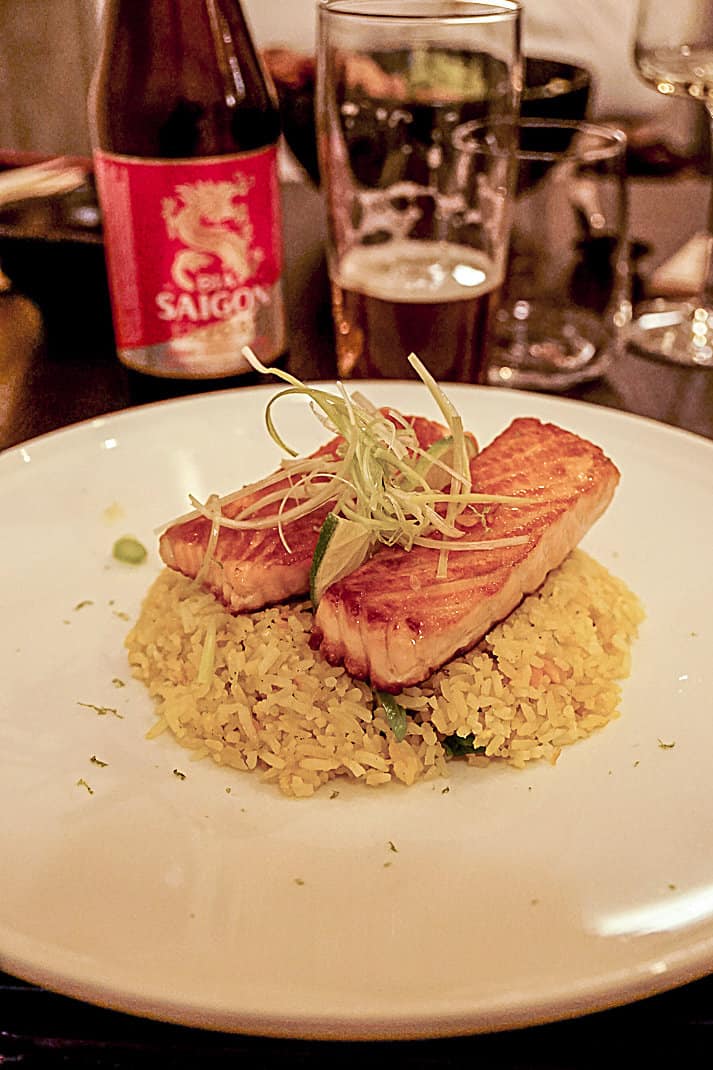
Marina, my girlfriend-photographer, had Com Chien Ca Hoi, wok-fried rice with salmon and egg. Nunu also has the ubiquitous pho, the traditional Vietnamese rice noodle soup in beef, chicken and vegetarian.
“There was some Vietnamese (restaurants) here but it wasn’t complete,” Nguyen said. “It was a big mix. It was mixed with Chinese. I didn’t really like it. I wanted more authentic and traditional and to get back to my roots.”
Her roots extend to the Vietnam War. In 1984, her father, a former soldier in the South Vietnamese army, escaped Ho Chi Minh City and the communist regime. Floating with other boat people off the coast of Singapore, he was rescued by Italians and chose to move to Italy. He arrived in Rome in 1984, taking young Nguyet with him.
With Italy’s Covid restrictions a distant memory, Nunu (a combination of her two names) is going strong.
“Even Italian people who want to go to Vietnam want to come here for their first experience,” she said. “To know more, they come to us. We have people who have adopted kids from Vietnam.”
Info: Via Varese 38/42, 06-8953-8247, https://ristorantenunu.business.site/?utm_source=gmb&utm_medium=referral, 12:30-2:30 p.m., 7-11 p.m. Wednesday-Sunday, mains from €10-13.


February 28, 2023 @ 2:40 pm
This is a wonderful article and a “must read “ for anyone interested in visiting Rome. Thank you!